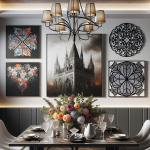Think back to some of your favorite animated movies and TV shows. Chances are, there were some memorable dog characters that stood out among the rest. From loyal companions to mischievous troublemakers, dogs have always played a significant role in animation. Let’s take a trip down memory lane and explore the evolution of dog characters in animation, focusing on some of the classics that have left a lasting impact on viewers of all ages.
The Beginning: Early Dog Characters
As far back as the early days of animation, dogs have been a staple in storytelling. Characters like Pluto, Goofy’s loyal pet, and Lady and the Tramp, the iconic duo from the beloved Disney film, have captured the hearts of audiences worldwide. These early portrayals set the foundation for the way dogs would be depicted in animation for years to come.
The Golden Age: Dog Characters Take Center Stage
During the golden age of animation in the mid-20th century, dog characters began to take on more prominent roles in animated features. Films like 101 Dalmatians and The Fox and the Hound introduced audiences to memorable canine characters with unique personalities and traits. These films showcased the versatility of dog characters in animation and solidified their status as beloved icons in the genre.
The Modern Era: Dogs as Heroes and Villains
In the modern era of animation, dog characters have continued to evolve in both their roles and personalities. From heroic dogs like Bolt, the superpowered pup from the Disney film of the same name, to villainous canines like Sid Phillips’ vicious toy destroyer in Toy Story, dogs have been portrayed in a variety of roles that reflect the complexities of their real-life counterparts. This evolution has allowed for a more nuanced and diverse representation of dogs in animated media.
Classic Dog Characters in Animation
Now, let’s take a closer look at some of the classic dog characters in animation that have left a lasting impact on audiences over the years:
Pluto
Pluto, Mickey Mouse’s loyal pet, made his debut in the 1930 animated short “The Chain Gang.” Since then, Pluto has appeared in countless Mickey Mouse cartoons and has become one of Disney’s most beloved characters. With his expressive face and playful antics, Pluto has endeared himself to generations of viewers as the ultimate canine sidekick.
Lady and the Tramp
Lady and the Tramp, the titular characters of the 1955 Disney film, are perhaps the most iconic canine couple in animation history. Their romantic spaghetti dinner under the stars has become one of the most memorable scenes in cinematic history, solidifying their status as timeless figures in the world of animation.
Scooby-Doo
Scooby-Doo, the lovable Great Dane from the animated TV series of the same name, has been solving mysteries with his human friends since 1969. With his trademark catchphrase “Scooby-Dooby-Doo,” Scooby has become a cultural phenomenon and a beloved figure in animation, spawning numerous spin-offs and movies that continue to capture the imaginations of audiences around the world.
Bolt
Bolt, the superpowered dog from the 2008 Disney film of the same name, is a departure from the traditional portrayal of dogs in animation. With his abilities to shoot lasers from his eyes and possess super strength, Bolt is a heroic figure who must come to terms with his own limitations and find the true meaning of friendship. Bolt’s journey is a poignant reminder of the power of love and loyalty, resonating with audiences of all ages.
The Impact of Dog Characters on Animation
Over the years, dog characters in animation have had a profound impact on the genre as a whole. Through their relatability, humor, and emotional depth, dogs have provided audiences with a unique lens through which to explore themes of loyalty, friendship, and bravery. Whether serving as comic relief, a source of inspiration, or a mirror to our own humanity, dog characters have played a vital role in shaping the landscape of animation and continue to be beloved by viewers of all ages.
Conclusion
From the early days of animation to the modern era, dog characters have been a constant presence in the world of animated media. Their evolution over time has reflected changes in storytelling techniques, character development, and audience expectations. By looking back at some of the classics that have defined the way we see dogs in animation, we can gain a deeper appreciation for these lovable and timeless characters.
FAQ
What makes dog characters in animation so popular?
Dog characters in animation are popular because they often embody traits that resonate with audiences, such as loyalty, courage, and humor. Their relatable qualities make them endearing to viewers of all ages.
Are there any upcoming animated films or TV shows featuring dog characters?
Yes, there are always new animated projects in development that feature dog characters. Keep an eye out for announcements from major studios and streaming platforms for the latest releases.
What are some of the challenges animators face when creating dog characters?
Animators face challenges in designing dog characters that are both visually appealing and able to convey emotions effectively. Balancing the realistic anatomy of dogs with exaggerated expressions can be a delicate process.








+ There are no comments
Add yours